Indiana Space Grant Consortium
PNW Rover

OVERVIEW The Human Exploration Rover Challenge 2018 is a continuation of Purdue University
Nor t hwes t -Hammon dâ s participation in a NASA sponsored race held annually in Huntsville, AL. Student
participation in this event would fall under the category of âHands-on classroom or project-based experiences
geared toward STEM workforce development.â Purdue University Northwest-Hammond is a recognized leader
in experiential education. It is one of the few universities in the nation that gives all students the opportunity
to build Experiential Learning into their curriculum by requiring two courses for graduation. PNW-Hammond is
one of a select few institutions in the country to adopt Experiential Learning (ExL) as a graduation
requirement that is designed to comply with the National Society for Experiential Education (NSEE)
standards. This is hands-on learning with opportunities to travel, volunteer, work or create. Types of
Experiential Learning are cooperative education, internships, practicums, undergraduate research, design
projects, cultural immersion, and service learning. Experiential Learning can afford faculty a new and creative
approach to teaching and mentoring students. The Human Exploration Rover Challenge will be used as a
design project, usually a senior project, for students. Participation in this competition helps a student fulfill
his/her ExL requirement.
PAST RESULTS in NASA Competitions (2003-2016)
Background From 2003 to 2013, Purdue University Calumet (PUC) participated in âThe Great Moonbuggy
Race.â Two entries per school were allowed the last few years of that race. In the last years of the
âMoonbuggy Raceâ buggies of a more radical design were entered. The designs were evaluated using FEA
prior to construction. For example, the 2011, âMoonbuggy Iâ and both Moonbuggies in 2012 & 2013 used a
carbon fiber hollow rectangular beam as the backbone of the frame, which reduced the weight 50 or more lb
compared to the 2010 Team I model. Additional efforts were made to further reduce the overall weight, such
as substituting aluminum for steel in the suspension. Progress was made in 2011, with Team I winning the
âMost Improved Award.â The race in 2012 was a breakthrough one for PUC with âMoonbuggy Iâ placing third
in the university division, and âMoonbuggy IIâ placing 10th. Additionally, âMoonbuggy IIâ won the âFeatherweight
Awardâ in the university division, weighing only 73 lb. In 2013, a PUC Moonbuggy also won the
âFeatherweight Award.â
Human Exploration Rover Challenge In Fall 2013, NASA declared the end of âThe Great Moonbuggy
Raceâ after 20 years. The replacement competition was called the âHuman Exploration Rover Challenge.â
While similar in concept to the Moonbuggy Race, the specifications for the vehicle were changed. T he
vehicle now must fit inside a 5 foot cube, instead of a 4 foot one, and pneumatic tires can no longer be
used. The course was modified, so that the terrain would be similar to that found on other planets. To do
so, the obstacles were more difficult to traverse than those for the Moonbuggy Race. In 2014, the first year
of the Rover Challenge a PUC Rover placed 8th out of 46 Rovers that were entered. The 2015 course was
tougher and the PUC Rovers finished 17th and 20th out of 47 entrants. Rover II did win the âCrash and Burn
Awardâ (for enduring and recovering from the worst vehicle breakdown). Last year, 2016, Rover I won the
race and the new sample retrieval challenge. Rover II finished 6th out of 49 entrants, and also won the
Neil Armstrong Best Design Award.

